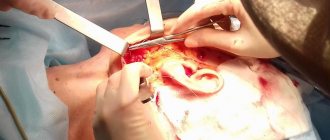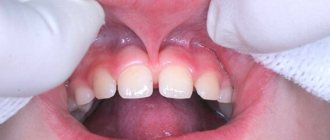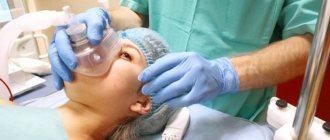- home
- Rhinoplasty
- Repeated (secondary) rhinoplasty in a clinic in Moscow
Repeated rhinoplasty of the nose becomes the only possible solution in cases where the previous surgical intervention has led to significant visually noticeable deformations of the external nose or impairment of its functions. The purpose of secondary rhinoplasty is to correct an unsatisfactory result obtained after a previous operation on the tip or dorsum of the nose. Sometimes after unsuccessful rhinoplasty there is significant asymmetry or excessive divergence of the wings of the nose. When eliminating the “hump,” a phenomenon called “saddle nose” may occur, when the back is too low (in this case, the surgeon’s mistake is to remove excess bone or cartilage tissue).
Go to photo gallery
But most often, the reason for patient dissatisfaction with the results of rhinoplasty is not the technique of performing it, but the individual characteristics of the body. Thus, the scar on the columella (the part of the skin located between the nostrils) after the healing process ends, becomes excessively dense and becomes too noticeable (the growth of scar tissue cannot be predicted). Due to the excessive convexity of the nasal septum, the nose visually lengthens.
Thanks to revision rhinoplasty, it is possible to solve this aesthetic problem, returning the organ responsible for our sense of smell to a harmonious shape, and to the patient - confidence in his attractiveness.
According to statistics, about twenty percent of patients express a desire to resort to revision rhinoplasty. To their great joy, experienced plastic surgeons are able to correct most problems.
SECONDARY RHINOPLASTY OPTIONS
- Minor correction to the previous result. The patient may be satisfied with the overall appearance of the nose but desire some improvement. In this case, the patient, as a rule, trusts the surgeon who performed the operation.
- Correction of a previous unsuccessful result.
Nasal reconstruction can be technically and aesthetically challenging. The nasal septum, the most important building block for nasal surgery, is often partially or completely removed. The cartilage and bones that create the shape of the nose have already been changed and deformed. The skin has become thicker and less elastic. Breathing is impaired. Often after resection or removal of nasal cartilage, scar tissue replaces most of the structures of the nasal framework. The components of the nasal structure must be re-created.
REASONS FOR REVISIONAL RHINOPLASTY
- Technical errors during surgery, unnatural appearance of the nose.
- Unpredictability of the behavior of the scar-adhesive process after the operation.
Complications can occur despite a technically well-performed operation. According to statistics, the probability of secondary rhinoplasty is 8-15%. The structural reconstruction must be precise to create the appearance of a beautiful nose, which will balance the patient's facial features. The structure must be strong enough to withstand the stress created by the scar tissue that has formed during the healing period of a previously operated nose. The breathing function of the nose must be maintained by strengthening the elements of the nose that are responsible for keeping the airways open. Some of the most common reasons for secondary rhinoplasty include: unnatural looking nose; dysfunction of external respiration; crooked nose or tip of the nose; displacement of implants; deviated nasal septum; implant displacement. Revision rhinoplasty can not only improve air flow through the nose, but also reduce snoring, sinus problems, and seasonal allergy symptoms.
Indications for the operation
- Aesthetic. The patient is not satisfied with the shape or size of the nose.
- Physiological. The functions of the respiratory organ are impaired.
- Anatomical. Residual or acquired violation of the geometry of the nose, the presence of noticeable scars on the skin, the appearance of a hump.
Revision rhinoplasty of the tip of the nose
Repeated correction is possible only 12 months after the primary rhinoplasty; the operation is performed only using the open method. This allows the surgeon to get a complete picture of the previous surgical procedures.
The tip needs correction if the desired result is not achieved. Another reason for performing revision rhinoplasty of the tip is functional impairment and severe external deformations (asymmetry of the tip, excessively diverging wings, too noticeable scar). Typically, revision rhinoplasty of the tip of the nose is a fairly simple procedure, requiring minimal surgical intervention. But sometimes a deep correction is needed, including transplantations to the tip.
Revision rhinoplasty of the nasal bridge
Among the unsuccessful primary operations are an excessively low (recessed) or unnaturally high (protruding) nasal bridge. In the latter case, the defect is easily eliminated (the back is sanded). If it turns out to be too recessed, then a special supporting graft is installed. There are situations when, during primary plastic surgery, an osteotomy is not performed, then the back takes on a saddle-shaped or flat shape. During secondary rhinoplasty, the specialist’s task is to restore the required volume and shape, and redistribute bone or cartilage tissue. It is important to understand that in cases of tissue shortage, correction is always more difficult.
TRANSPLANTS FOR REVISIONAL RHINOPLASTY
Grafts are structural elements made from tissue, usually cartilage. Surgeons often use body cartilage rather than implants (such as silicone, Gore-Tex or Medpore) because foreign substances tend to become infected or "born" and pushed out of the nasal tissue. The necessary material can be obtained from the nasal septum. In the absence of septal cartilage, cartilage can be removed from the ear through an incision in the postauricular area. Rib cartilage can also be used. In the most severe cases, the bones of the cranial vault. The choice of graft collection site depends on the task and many other factors.
ANOTOMIC ANALYSIS OF THE NOSE
A detailed anatomical analysis of the nose is the first important step in achieving a successful surgical outcome. Analysis of the nose during revision rhinoplasty is complicated by changes in anatomical structures from previous operations.
In cases of deviated septum, septoplasty is performed. The procedure includes: resection of the septal cartilage, application of incisions, application of corrective sutures, installation of cartilage strata.
A significant factor influencing the result is the skin - its thickness, elasticity, integrity, mobility in relation to the main nasal structures. Then the nose bones, the position and size of the bones. The nasal bones are palpated to identify any abnormalities, irregularities, or asymmetries. For the tip, the cartilages that form it are studied and evaluated - symmetry, projection, and relationship with the columella are examined.
Rehabilitation period
When deciding to undergo secondary rhinoplasty, the patient must be clearly aware that the rehabilitation period will last much longer, and discomfort can be felt for up to seven months. for revision rhinoplasty usually includes postoperative observation, so rehabilitation is carried out under the supervision of specialists. The person must wear a post-operative bandage for a week. Typically, turundas are installed in the nasal cavity, collecting and absorbing all secretions formed as a result of damage to the internal structures of the organ. To ensure normal breathing for the patient, special tubes are inserted into the nostrils.
Swelling also persists for a long time (it can last for a much longer period of time compared to the primary operation). Due to more severe damage to the nasal structures, pain also lasts longer. You may also experience nasal congestion for several days after the procedure. Rehabilitation measures are designed to help the patient cope with discomfort, the purpose of which is to relieve swelling, improve tissue trophism and regeneration.
OPERATION AND REHABILITATION
Revision rhinoplasty is performed under general anesthesia, allowing the surgeon to concentrate on the operation. Most patients can return to work within a few days after surgery. After about 6 weeks, the nose will look quite good, although swelling will remain. The reason the swelling lasts is due to the disruption of normal lymphatic drainage for recovery, which takes time. The formation of scar tissue after surgery also leads to long-term increased tissue volume. Approximately 75-80% of the swelling goes away within the first month. The last 30% of swelling can take up to one year or more to resolve, depending on many factors.
We can talk about the final result after secondary rhinoplasty only after 12-18 months, when the nose acquires its final shape and size.
Repeated (secondary) rhinoplasty
The nose is one of the most important parts of a person's appearance. This is the middle of the face and the most noticeable part of it.
High-quality rhinoplasty not only solves aesthetic problems, but preserves and sometimes creates conditions for normal nasal breathing.
Rhinoplasty is one of the most unpredictable plastic surgeries. Even among the most experienced surgeons, the frequency of repeated (secondary) operations, according to various sources, reaches 8-11%. And if one of the surgeons claims that he does not have repeated (secondary) rhinoplasties, then this means that he simply does not see them, and other surgeons operate on them.
The need for repeated (secondary) rhinoplasty is caused by the unpredictability of the tissue response to injury: inflammation, resorption or displacement of cartilage or bone structures, the formation of hematomas with organization into a volume in an unnecessary place. The bone may heal with the formation of a rough callus or even with the formation of osteophytes. Less commonly, complications result from surgical technique errors and patient failure to comply with recommendations in the postoperative period.
The tendency towards organ-preserving operations, a thorough examination (including a general clinical examination and not just pictures, but Computed Tomography (CT) of the nose, sinuses and other nearby structures), can reduce the number of complications; refusal to perform surgery if the patient has serious abnormalities in tests, serious concomitant diseases, keloid scars, a tendency to bleeding and purulent-inflammatory complications after operations, the emergence of assumptions about the patient’s possible non-compliance with future recommendations of the postoperative period.
Secondary rhinoseptoplasty is an order of magnitude more complex operation than primary.
The complexity of secondary rhinoseptoplasty begins from the moment of detachment of the integumentary tissues, sometimes tightly fused by scar tissue to the underlying structures. And then sometimes not the most joyful surprises follow. These include unpredictably altered anatomy, the absence of cartilaginous and/or bone structures due to their removal, excessive resection or resorption, old sutures and implants, foci of inflammation, synechiae and perforation of the septum, and excessively resected nasal turbinates.
Secondary rhinoseptoplasty involves careful restoration of the normal anatomy of structures that have been lost or destroyed, which usually requires the use of auricular or costal cartilage and sometimes the purchase of acellular matrix. Unfortunately, some structures cannot be restored.
Repeated (secondary) rhinoplasty cannot be predicted even using all research methods invented to date, and therefore is more complex and unpredictable than primary rhinoplasty. As a result of repeated (secondary) rhinoplasty, the nose usually looks better than before, but achieving an ideal shape and restoring respiratory function is much more difficult and sometimes impossible.
Before secondary rhinoplasty, a consultation with a plastic surgeon with computer modeling is carried out. The presence of preoperative photographs (before the first operation) greatly facilitates secondary reconstructive rhinoseptoplasty.
Repeated (secondary) rhinoplasty is performed under general anesthesia. The average duration of repeated (secondary) rhinoseptoplasty is several hours, depending on the complexity of the case. Repeated (secondary) secondary rhinoplasty is always open rhinoseptoplasty. Usually the incision is made along the old scar. Only open access allows us to visualize and diagnose the cause of violations that have occurred and correct them efficiently.
After revision (secondary) rhinoplasty, you stay in the ward for 3 days. Then observation is carried out on an outpatient basis for 2 weeks (until the plaster is removed). Further examinations/procedures are performed once every 2 weeks for the first 1-2 months.
The cost of repeated (secondary) rhinoseptoplasty (including the operation itself, anesthesia, ward, examinations/dressings, observation for 1 year) is from 170,000 to 270,000 rubles. Under warranty - 30,000 rubles.
The price does not include preoperative examination.
Make an appointment for any rhinoplasty only after an in-person consultation. The waiting list for surgery in the summer is about 2-3 weeks, in the winter about 2-3 months.










